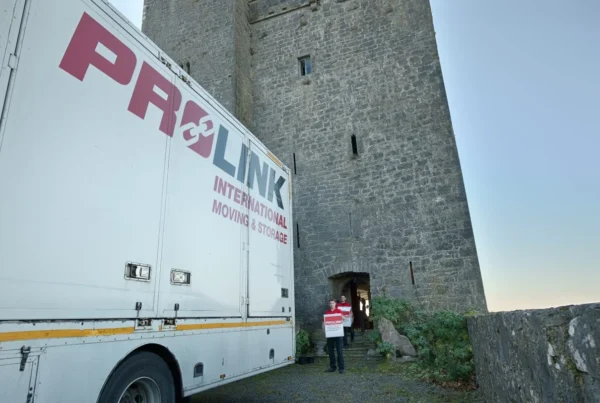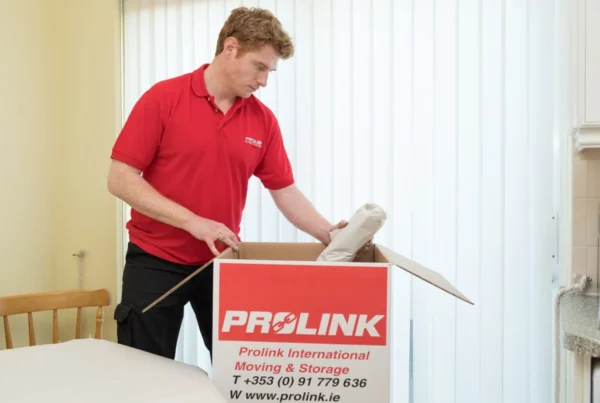
Relocating your office is a major transition that requires careful planning and coordination to ensure minimal disruption. From managing logistics to keeping employees engaged, every detail matters. This guide provides a comprehensive, step-by-step checklist to help businesses in Ireland move efficiently, covering packing strategies, IT infrastructure relocation, workspace setup, cost-saving measures, and sustainable moving tips.
Step 1: Start Planning Early for a Smooth Move
A successful office relocation begins with an early and detailed plan. Aim to start the process at least six months in advance to avoid last-minute stress. Here is what needs to be done:
Establish a Moving Committee
Appoint key team members to oversee the move and ensure smooth coordination between departments.
Set a Realistic Moving Budget
Determine moving expenses, including transportation, packing supplies, furniture installation, and potential downtime costs.
Research Moving Companies in Ireland
Get multiple quotes from professional office movers, ensuring they have experience with business relocations.
Create a Detailed Timeline
Outline specific tasks and deadlines leading up to the move date.
Keep Key Stakeholders Informed
Notify employees, clients, vendors, and service providers about your moving schedule.
Update Legal and Business Records
Change your office address with government agencies, banks, utility providers, and licensing bodies.
Pro Tip: Stagger moving tasks over time instead of doing everything at once. A gradual transition minimises disruption.
Step 2: Conduct an Office Inventory and Declutter
Moving is the perfect opportunity to reduce excess clutter and streamline your office setup. This step helps cut moving costs and improve efficiency.
Conduct a Full Inventory
Identify essential items and separate anything unnecessary or outdated.
Dispose of Equipment Responsibly
Recycle or donate old office furniture, electronics, and supplies.
Digitise Paper Records
Scan and store important documents digitally to minimise physical storage needs.
Order New Office Supplies in Advance
Ensure desks, chairs, and other essential equipment are ready before move-in day.
Pro Tip: Moving fewer items, especially bulky and outdated furniture pieces, makes your relocation faster and cheaper. Sell or donate used desks, chairs, cabinets, and other extras instead of transporting clutter. If you’re decommissioning old devices, book a certified on-site IT destruction service to dispose of hardware safely.
Step 3: Organise Packing and Labelling for Efficiency
Packing a large office requires strategic organisation. Poor labelling and haphazard packing can cause delays and confusion when unpacking.
Use a Colour-Coded Labelling System
Assign different colours for departments to speed up unpacking.
Pack Non-Essential Items First
Store archived documents and rarely used supplies in advance.
Label Everything Clearly and Accurately
Include details like the department, item type, and destination room.
Use Sturdy Boxes and Protective Wrapping
Ensure delicate items like computers and glass furniture are properly protected.
Keep Essential Items Accessible
Pack critical business files and IT equipment separately for quick access.
Pro Tip: Avoid last-minute packing! Assign teams or departments to pack in stages for better organisation.
Step 4: Manage IT and Connectivity Setup
IT infrastructure is one of the most critical components of an office move. Downtime or data loss can cause major setbacks, so take these precautions:
Ensure All Essential Business Data is Backed Up
Make sure cloud and offline backups are created before disconnecting any equipment.
Develop a Transition Plan for IT Equipment
Coordinate with your IT team to ensure a smooth reinstallation at the new location.
Schedule Internet and Phone Setup in Advance
Avoid delays by arranging connectivity before moving in.
Update Sec. Systems & Access Controls
Ensure that your new office has proper cyber and physical security in place.
Label and Pack IT Equipment Separately
Protect devices like servers, computers, and printers with proper packaging.
Pro Tip: Assign an IT team to oversee the safe transportation and reinstallation of all digital systems to prevent security risks.
Step 5: Keep Employees Informed and Engaged
A well-communicated move reduces stress and improves employee productivity. Involving staff in the process ensures a smoother transition.
Hold Regular Staff Meetings
Keep employees updated on moving schedules and expectations.
Assign Responsibilities for Departments
Employees should pack their own desks and assist with moving department-specific items.
Provide a Detailed Moving Guide
Share a document outlining instructions for packing, labelling, and workstation setups.
Offer Remote Work Options During Move
Reduce disruptions by allowing employees to work remotely if necessary.
Plan a Welcome Event in the New Office
Help employees settle in with a team meeting or office tour.
Pro Tip: Encourage employees to declutter their workspaces before packing to make the transition easier.
Step 6: The Moving Day Strategy
When moving day arrives, having a clear plan will help things run smoothly. Here is how to manage the process effectively:
Confirm Details with the Moving Company
Double-check arrival times, routes, and unloading procedures.
Ensure All Essential Equipment Moves First
Start with IT infrastructure, desks, and office essentials.
Supervise the Unpacking Process
Assign team members to oversee the setup in the new location.
Do a Final Walkthrough of the Old Office
Ensure nothing is left behind and check for damages.
Update Your Address Online
Change business listings on Google, company websites, and social media.
Pro Tip: Keep a moving-day emergency kit with tools, cables, chargers, and basic first aid supplies.
Step 7: Setting Up and Settling In
Once your office is fully moved in, it is time to ensure everything is running smoothly.
Test All Equipment Immediately
Check internet, phones, computers, and security systems.
Arrange Furniture for Productivity
Ensure the layout supports collaboration and efficiency.
Dispose of Moving Waste Responsibly
Recycle boxes and packing materials where possible.
Gather Employee Feedback
Ask staff for input on improvements or missing necessities
Celebrate and Announce the Move
Organise a small welcome event to boost morale and teamwork.
Pro Tip: Conduct a post-move survey to gather insights on what worked and how to improve for future moves.
Final Thoughts: A Well-Planned Move Leads to Success
Office removals require careful coordination and planning to prevent unnecessary delays and disruptions. By following this comprehensive checklist, you can ensure efficiency, maintain productivity, and create a positive moving experience for your team.
And if you’re running out of space during the process, especially for excess furniture, archived files, or seasonal equipment, self storage containers can be a smart short-term or long-term solution. They’re secure, convenient, and available in various sizes across Galway.
Contact us today to get expert relocation support tailored to your business needs!





